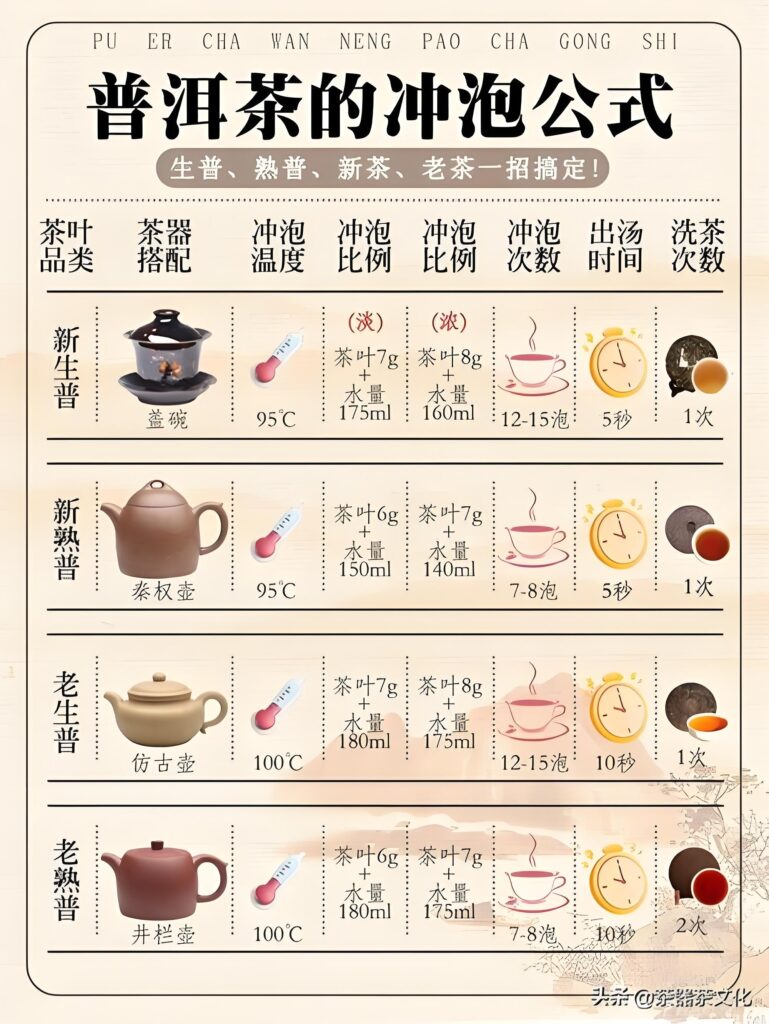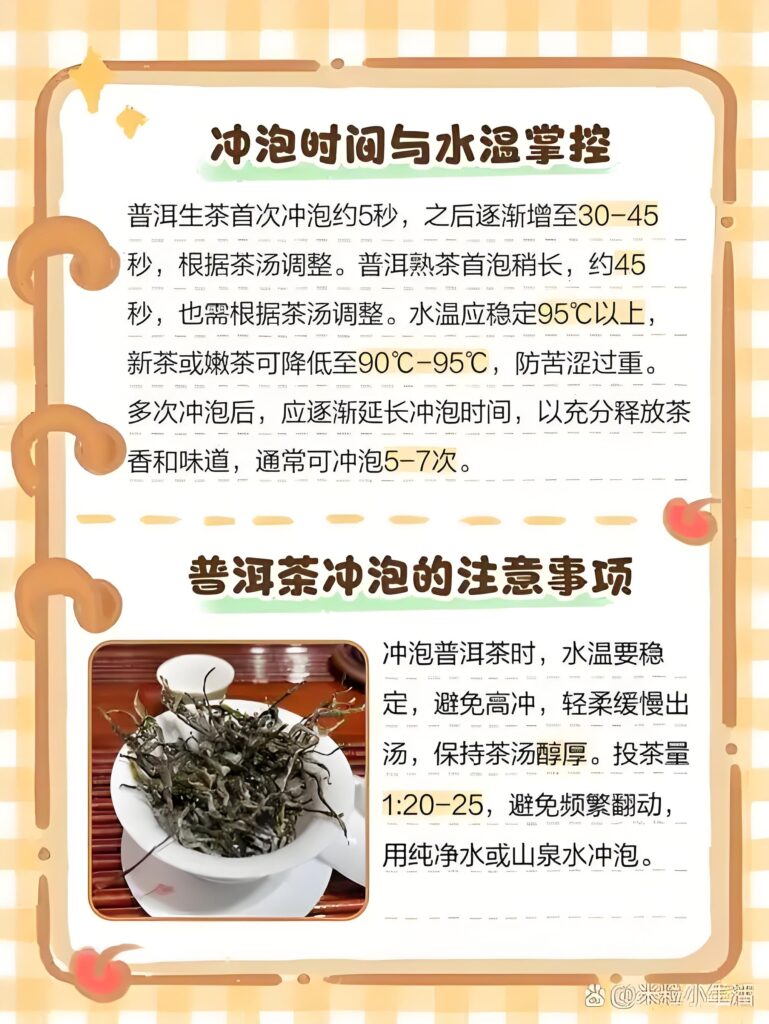How to Brew Yunnan Pu-erh Tea: A Complete Guide
Yunnan Pu-erh tea, a unique fermented tea from China’s Yunnan Province, is beloved worldwide for its rich aroma and complex flavor. The proper brewing method is essential to fully unlock the tea’s character and enjoy its full health benefits. In this article, we will provide a detailed guide on how to brew Pu-erh tea, including optimal water temperature, tea ware selection, tea-to-water ratio, and steeping times, so you can easily enjoy a perfect cup at home.

Why Brewing Pu-erh Tea Correctly Matters
Pu-erh tea comes in two main types: Raw Pu-erh (Sheng Pu-erh) and Ripe Pu-erh (Shou Pu-erh). Each type differs in fermentation, flavor, and body. Incorrect brewing may result in bitterness, off-flavors, or cloudy tea. Mastering the correct brewing process helps release the tea’s polyphenols, essential oils, and beneficial compounds.

Step-by-Step Pu-erh Tea Brewing Method
1. Choose the Right Tea Ware
Purple clay teapots (Yixing), porcelain gaiwans, or ceramic teapots are ideal for preserving heat and enhancing aroma.
2. Measure the Tea Leaves
Use approximately 5 grams of Pu-erh tea per 150ml (5 oz) of water. For tightly compressed teas (cakes or bricks), slightly increase the tea amount.
3. Use Quality Water
Spring water or filtered soft water is ideal. Avoid distilled or overly purified water, which can mute the tea’s flavor.
4. Control the Water Temperature
- Ripe Pu-erh: Use 100°C (212°F) boiling water to extract the rich, mellow flavors.
- Raw Pu-erh: Use slightly cooler water at 95°C to 98°C (203°F to 208°F) to avoid excessive bitterness.
5. Rinse (Awaken the Tea)
Pour hot water over the tea and immediately discard (within 5 seconds). This cleans the leaves and awakens the flavors, especially for aged or long-stored Pu-erh.
6. Brewing & Steeping
- First infusion: Steep for 10-15 seconds.
- Subsequent infusions: Gradually increase steeping time by 5-10 seconds per brew.
- Total infusions: Pu-erh is highly durable, usually yielding 8-12 or more infusions.

Pro Tips for Brewing Pu-erh
- Avoid over-steeping, which can produce cloudy or bitter tea.
- Ensure smooth water flow and quick pouring for each infusion.
- Raw Pu-erh is bright and refreshing, while ripe Pu-erh is mellow and soothing. Choose according to season or preference.

Frequently Asked Questions (FAQ)
Q1: Can I brew Pu-erh tea in a thermos or insulated bottle?
A1: Not recommended. Prolonged steeping at high temperature can ruin the flavor. Use proper tea ware for best results.
Q2: Is the brewing method different for Raw and Ripe Pu-erh?
A2: Slightly. Ripe Pu-erh benefits from higher temperature and quicker brews; Raw Pu-erh requires careful temperature control to avoid bitterness.
Q3: Can I drink Pu-erh tea every day?
A3: Yes, moderate daily consumption may aid digestion and reduce cholesterol. However, avoid drinking on an empty stomach to prevent discomfort.
Q4: Does lower water temperature affect the taste?
A4: Yes. Insufficient heat prevents full extraction, resulting in weak and flat flavors, especially for ripe Pu-erh.
Conclusion: Master Water Temperature to Brew Perfect Pu-erh
Yunnan Pu-erh tea is more than just a beverage—it’s a cultural experience. Whether enjoying solo, entertaining guests, or collecting, mastering water temperature, tea ratio, and steeping time is key to unlocking its full potential.
📩 Contact us for premium Yunnan Pu-erh tea and tea ware recommendations:
👉 https://longyuanfamily.com/contact-us/vv